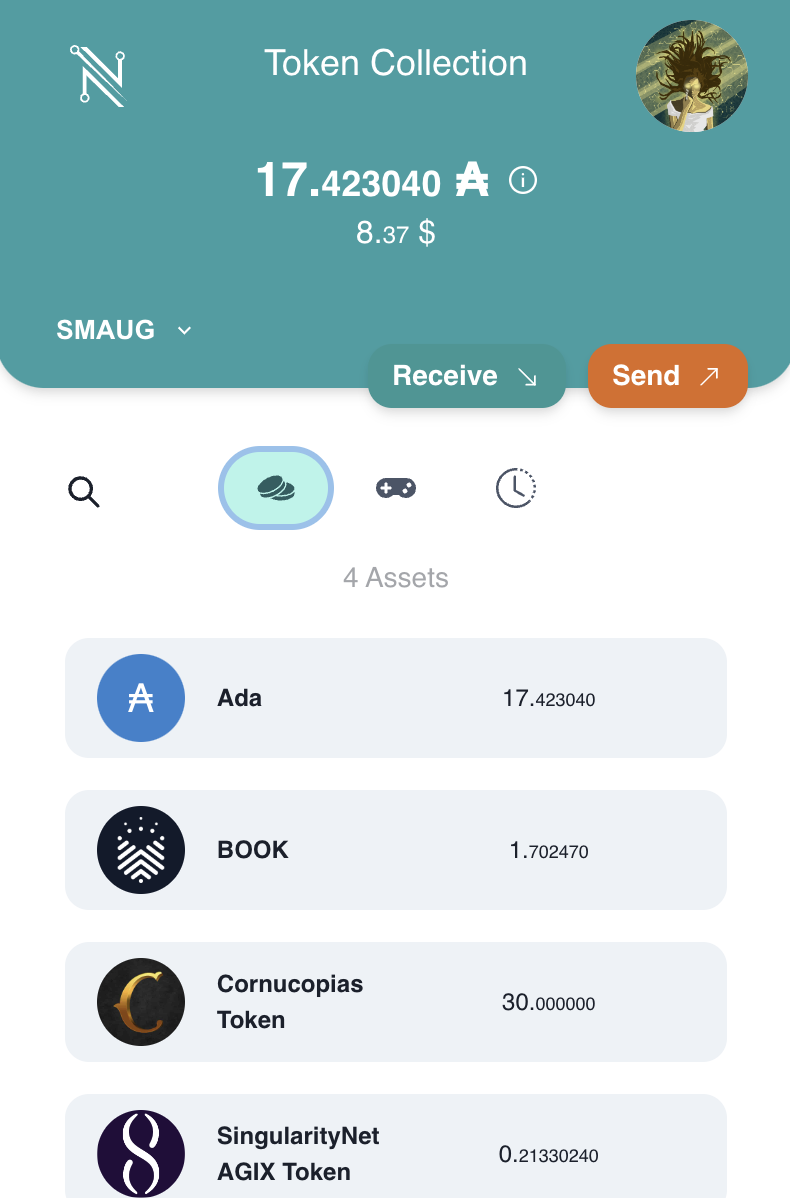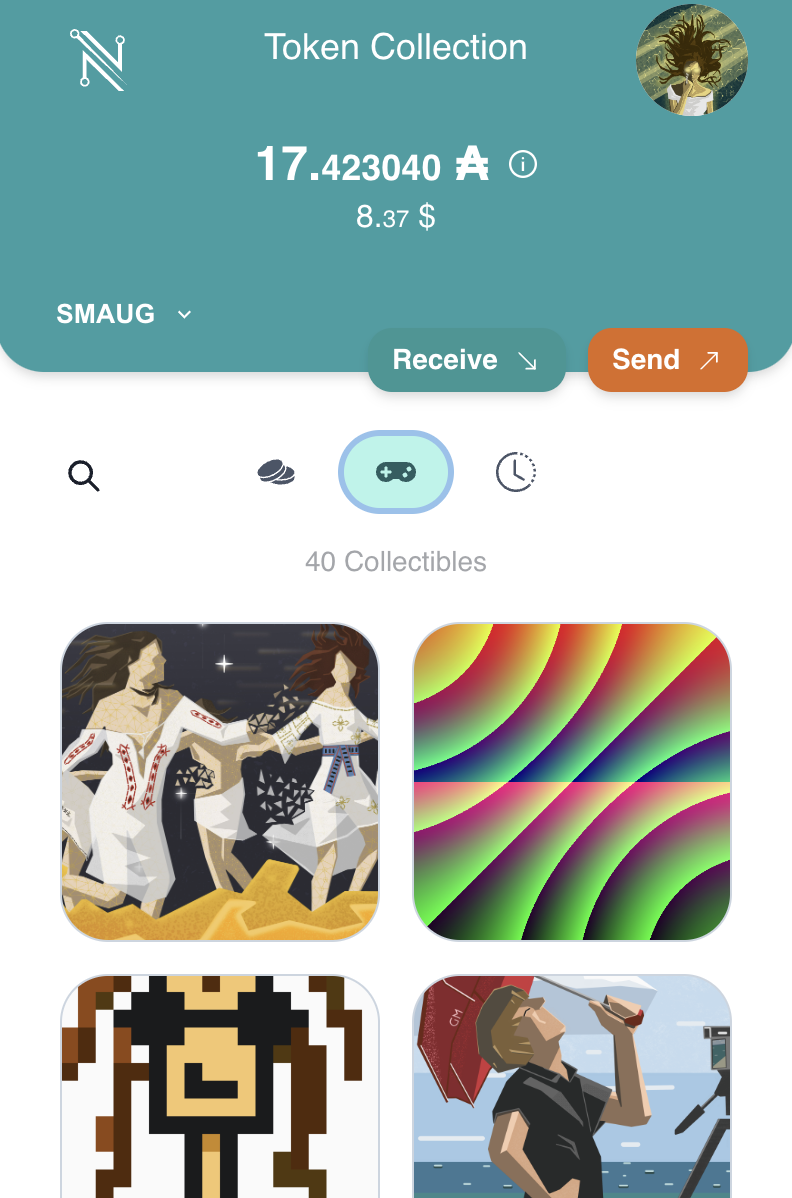
IN THIS LESSON
Your wallet holds your digital assets and shapes your Cardano experience. Discover the strengths of Eternl's depth, Vespr's mobile optimization, Lace's user-friendliness, and Nami's streamlined approach.
Eternl (desktop, mobile)
Eternl is probably the most complex and feature-rich Cardano wallet. Granted it can possibly be overwhelming for less experienced new users, but once you get used to it, it offers everything that you would ever want to know or do, at a quick glance, or at a distance of a few clicks. Its NFT gallery may not offer the most aesthetic presentation, but it certainly offers a very comprehensive view of the NFT statistics and metadata, and is only one of two wallets on this list that offers a quick view of the estimated value of an NFT based on current market prices. Eternl also offers a mobile version of the wallet, but at the time of writing, it’s basically just a rescaled version of their Desktop wallet, and as such not really suitable for touch inputs or quick, on the go use cases - it can work in a pinch, especially if you’re already familiar with the desktop interface, but we wouldn’t recommend it as the go to option on mobile.
Eternl may be the most complex of the Cardano wallets but once you familiarize yourself with the interface it's definitely the easiest to read:
transactions in the transaction history tab are labeled with a distinct color for easy recognition depending on the known dApp it interacted with
additional labels for transaction description, such as confirmation status, and description of transaction type: mint, swap, etc.
accessible information on your reward history and stake pool performance
and many more
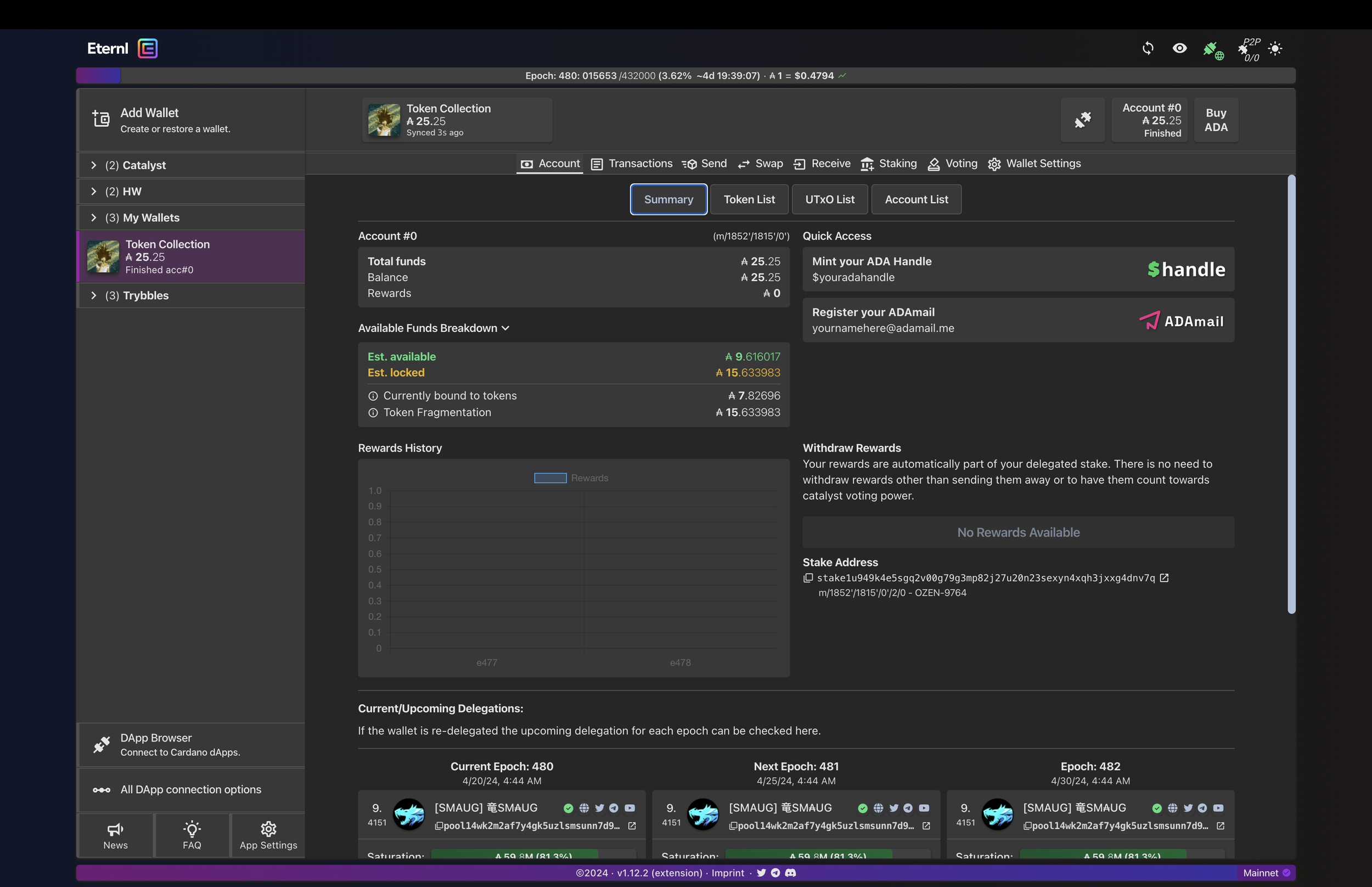
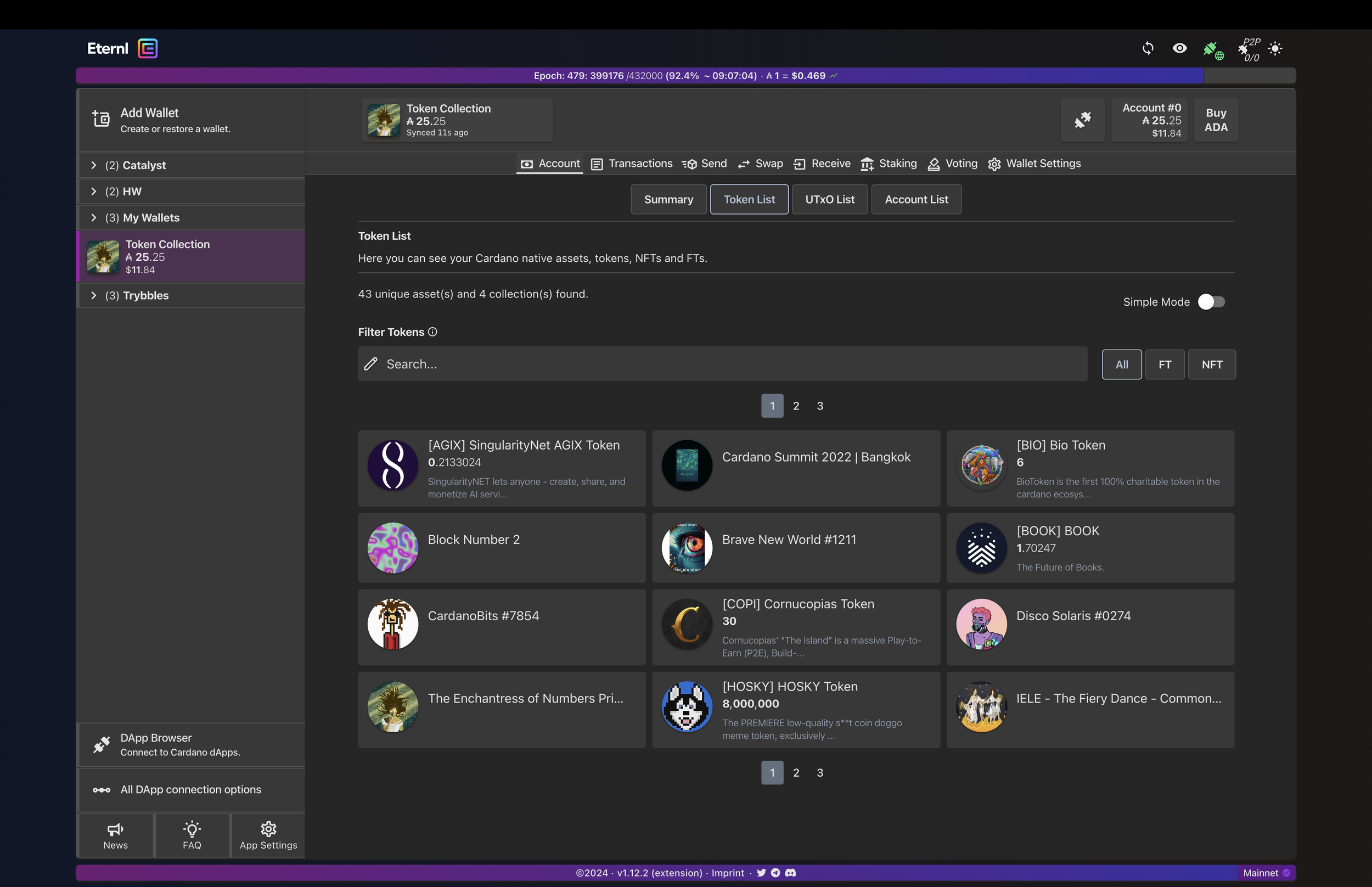
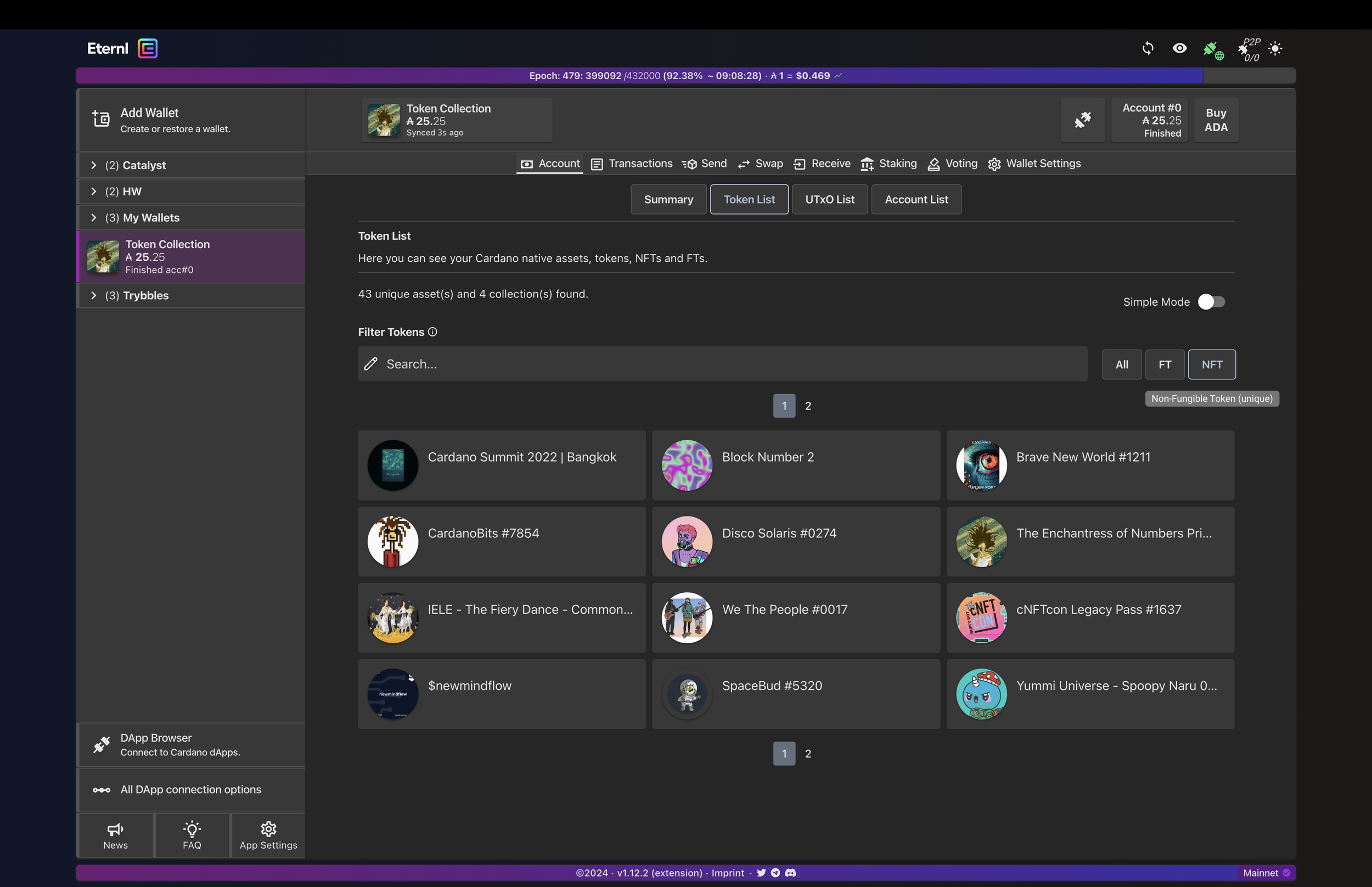

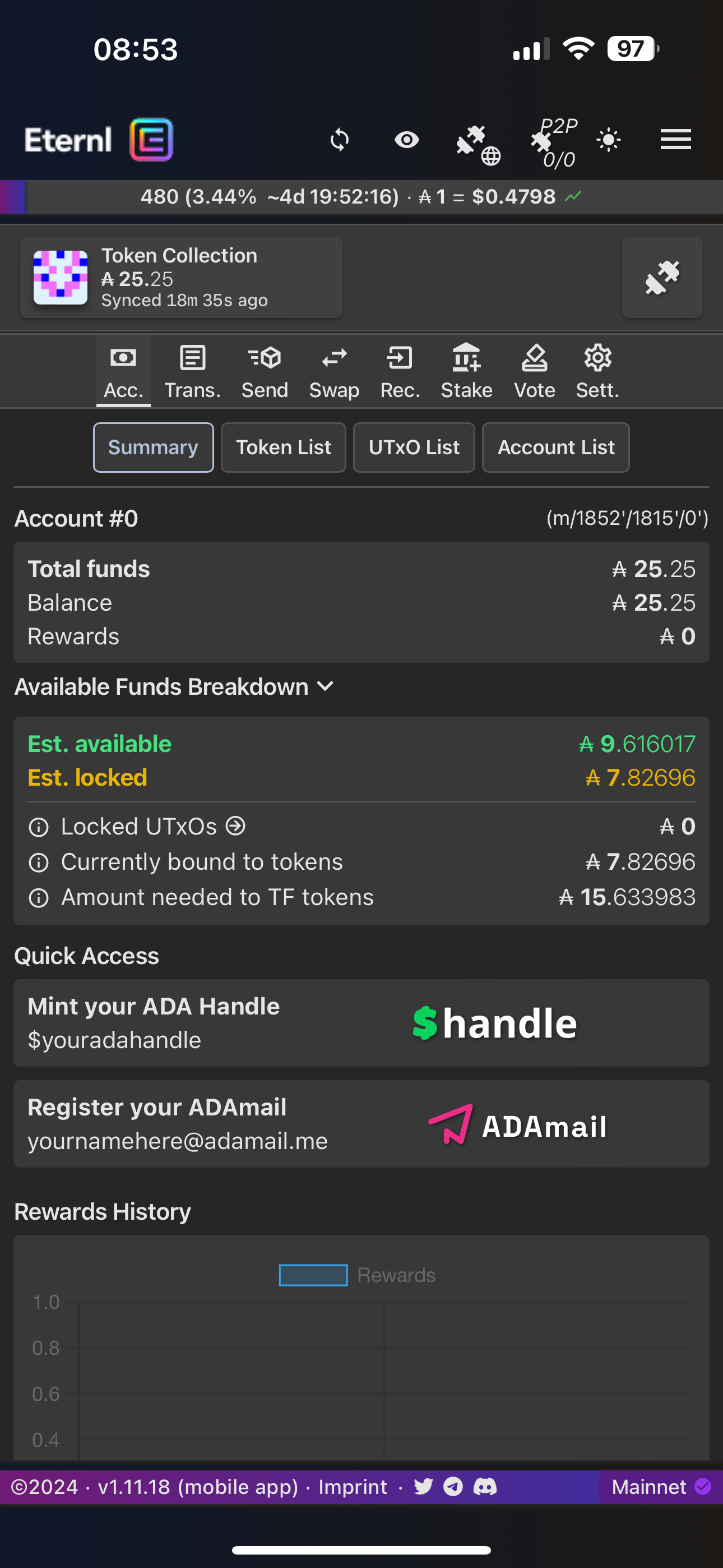
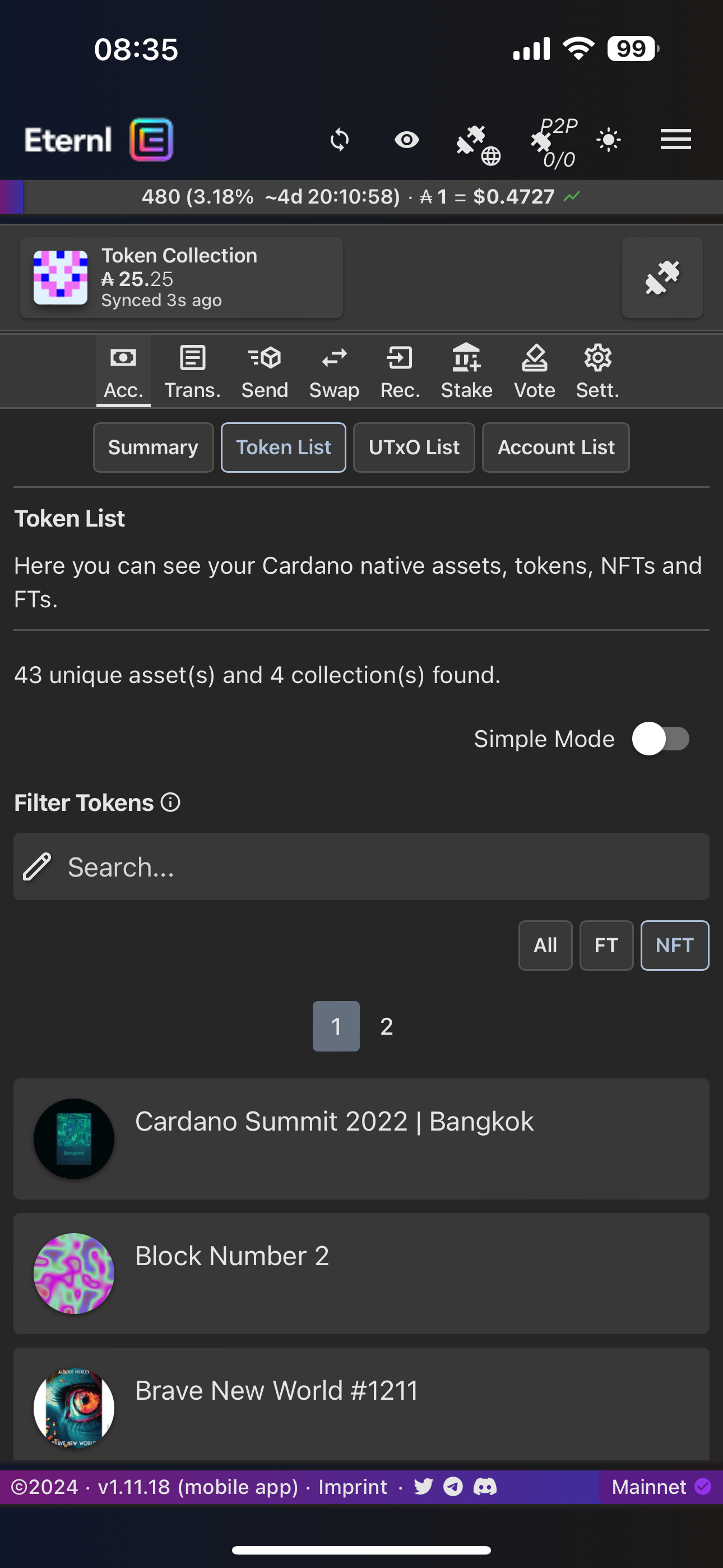
Vespr (mobile)
Vespr is a mobile only wallet that offers a very smooth experience, perfectly suited for a handheld device. It’s fast, clutter-free and offers a great balance between usability, information and aesthetics. The NFT gallery is minimal, yet functional. The Collectibles button on the navigation bar displays all the NFTs in your wallet grouped by policy id. You can dig down in each collection and you will be presented with a large, almost fullscreen, carousel of all the NFTs you own from that particular collection. Tap on the little ⓘ symbol in the upper right corner of the screen to get a full view of the Token metadata. The gallery also offers search, though as of now it’s limited to collections, meaning that it doesn’t support searching for individual NFTs.
The wallet also offers a unique and very handy feature - in the top right corner of the main “Your Collectibles” page there is a “For Sale” button - tap it and you will be presented with a list of all NFTs that you have listed on major Cardano NFT marketplaces from that wallet.
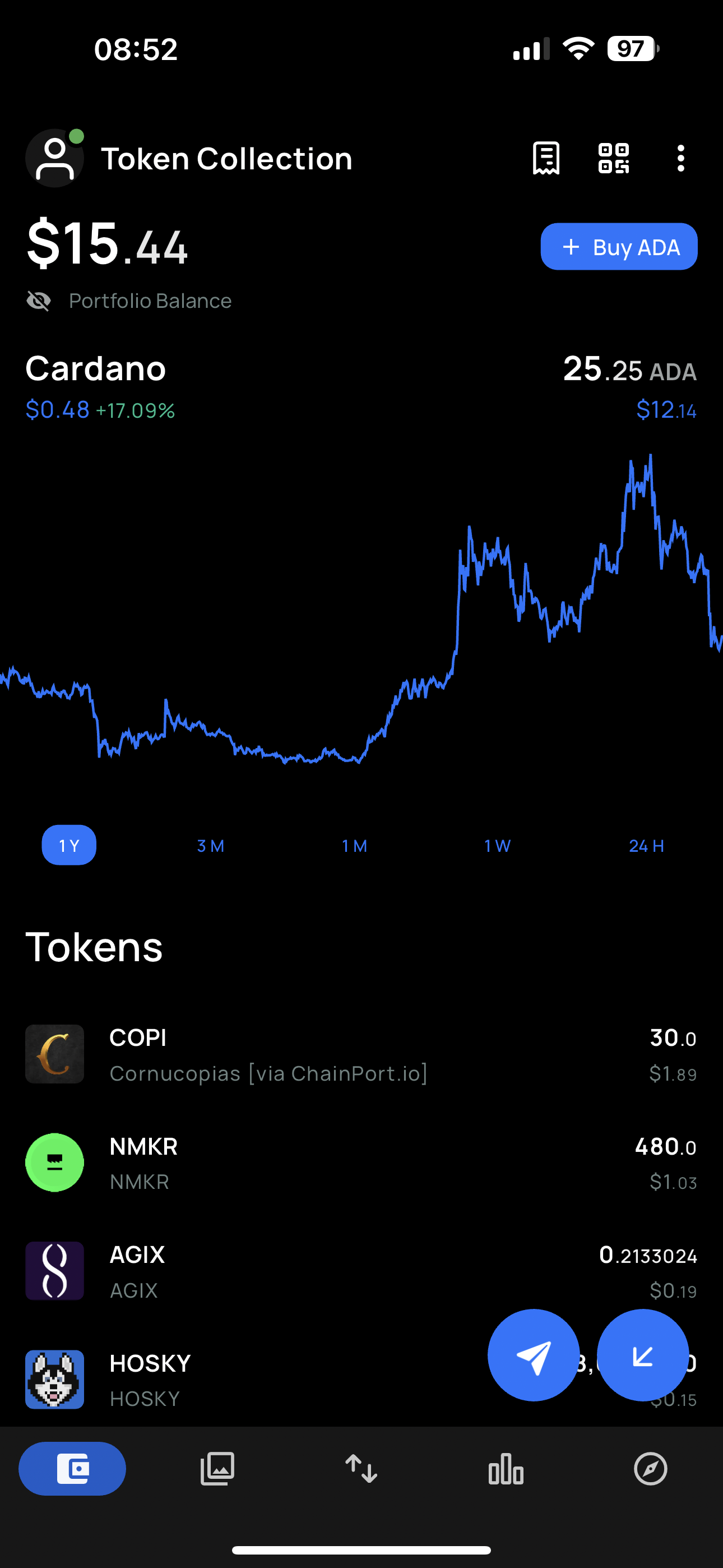
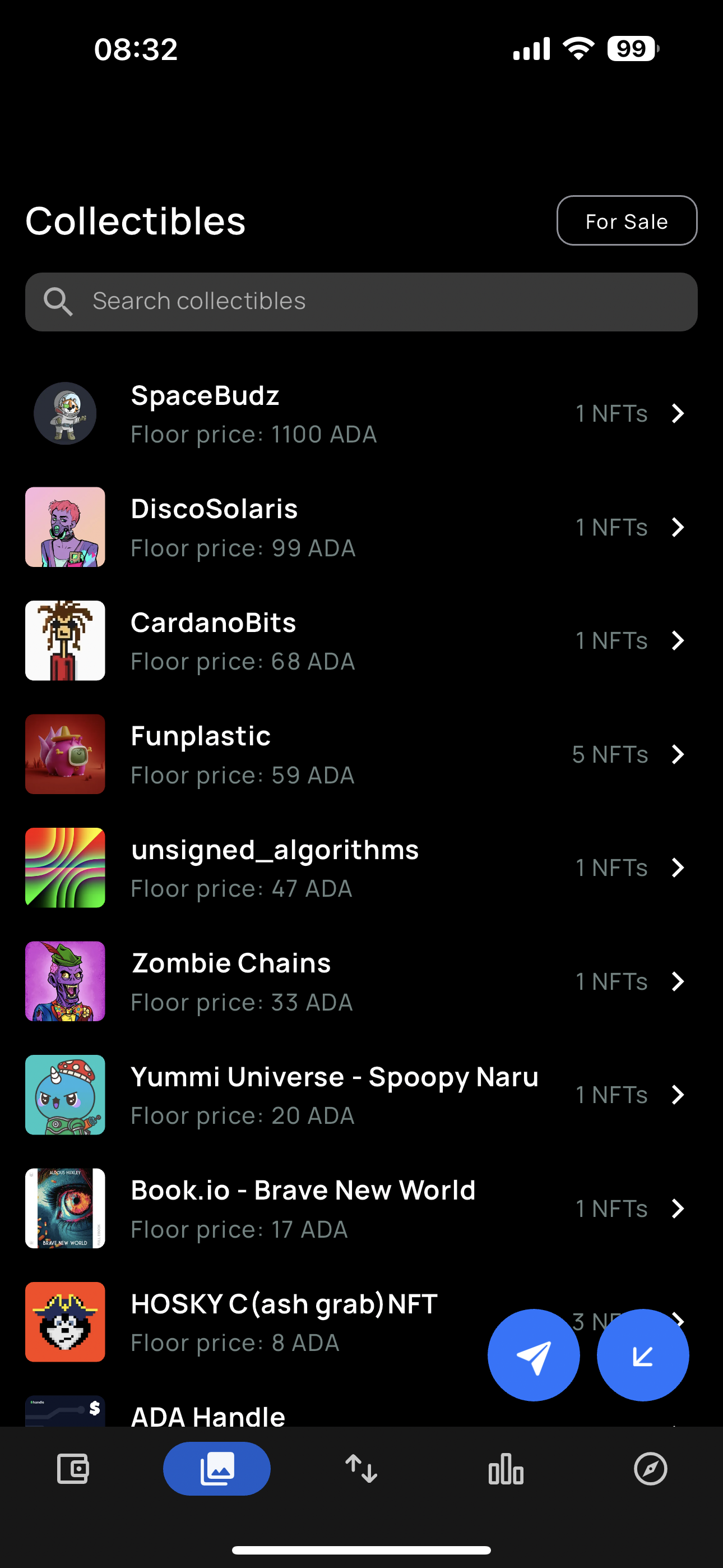
Lace (desktop)
Lace is a relatively newcomer to the Cardano lite wallet space, but it stands out for several reasons. Firstly, it’s developed by one of the founding entities of Cardano, the company responsible for the technical development of the chain, IOG (Input Output Global) - given this, it’s perhaps the closest thing that exists on Cardano to an “official” light wallet. The company is also responsible for the development of Daedalus, Cardano’s full node wallet, though Lace is developed by an entirely different team within the company.
The wallet is very simple to use and has a clean, minimal interface designed for users of all levels of experience. It has a stand-out feature when it comes to its NFT gallery, namely the fact that it allows for the creation of custom folders. Other wallets usually display NFTs grouped by the policy ID of the collection, but in Lace you can mix and match them according to your own preferences and logic.
Furthermore Lace allows you to effortlessly send NFTs and other assets to multiple recipients - simply click the “Add bundle” button in the send window.
If you’re interested in finding out more about Lace, it has a very comprehensive FAQ and Glossary page.
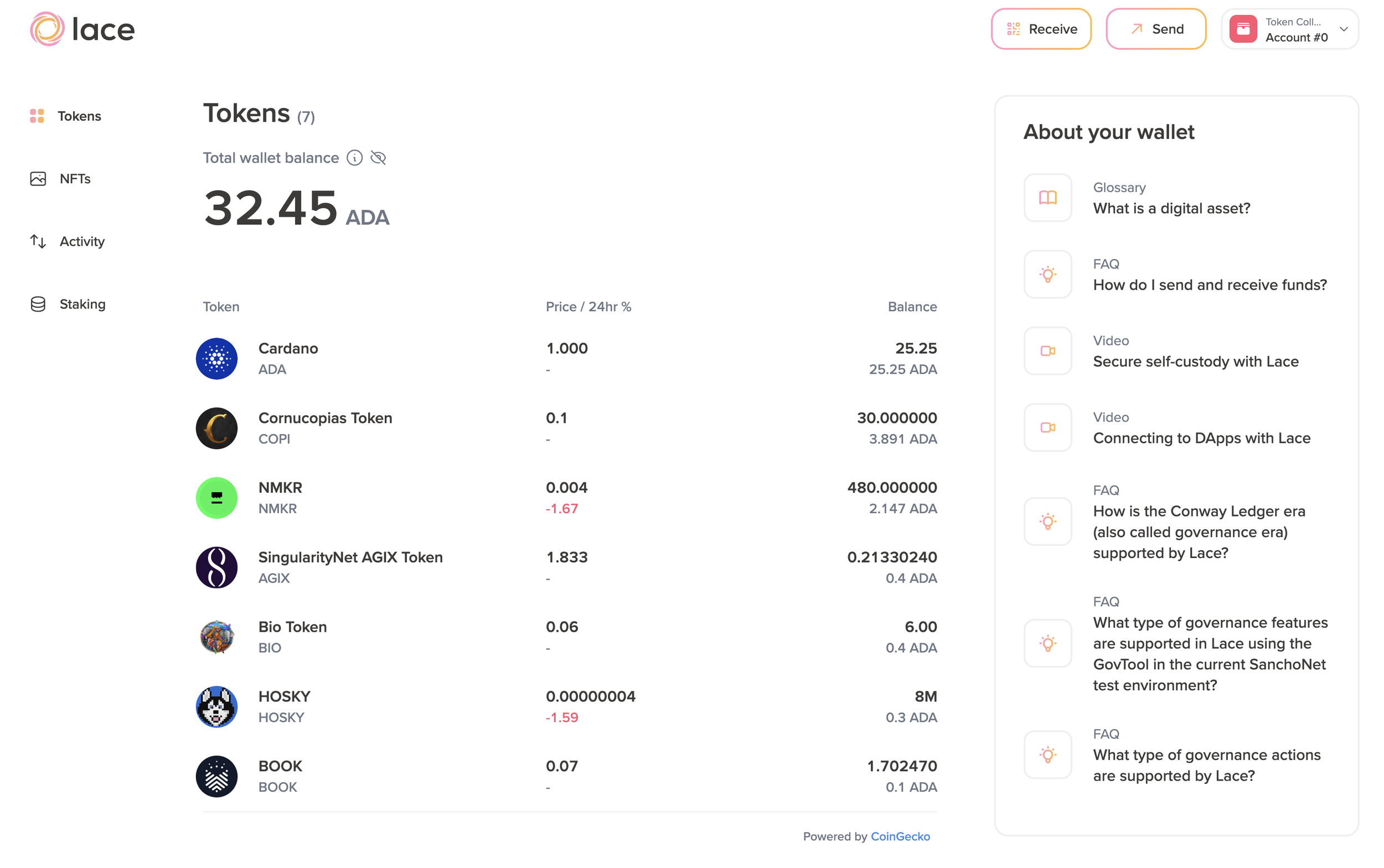
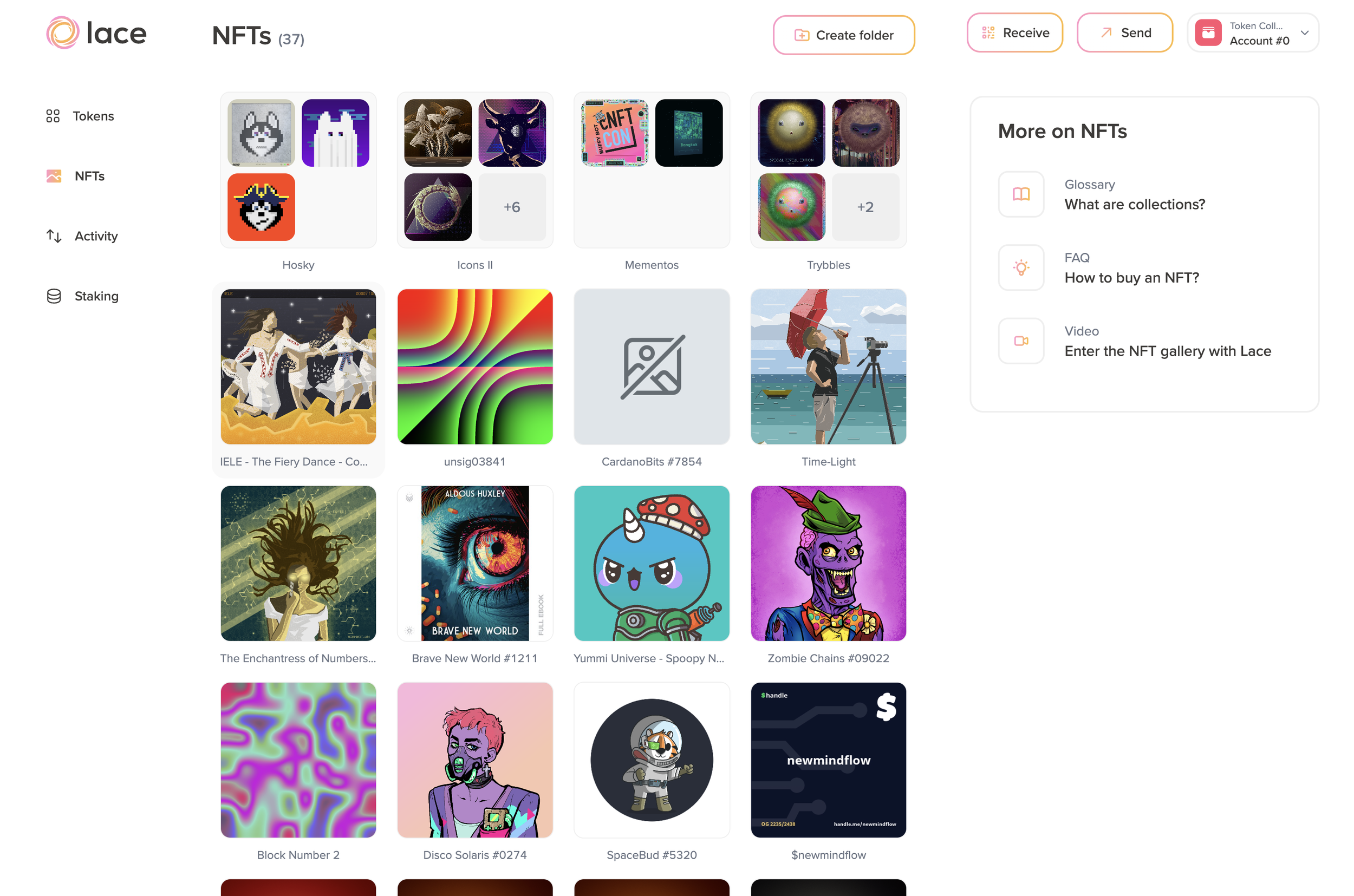
Nami (desktop)
Developed by a one-man team (Alessandro Konrad aka Berry Ales ), Nami was the first Cardano wallet to feature a dApp connector, in September 2021.
Nami has been recently purchased by IOG, which is looking to integrate a very simple and user-friendly “Nami mode” into Lace.
It’s an extremely minimal wallet, which makes it very easy to use for beginners or in combination with a small wallet, with relatively few assets. Its simplicity is also reflected in its NFT gallery, labeled as “Collectibles” - NFTs are displayed as square thumbnails, that enlarge when clicked to the native aspect ratio of the image. This view also provides minimal information about the asset: name, policy ID and asset ID (Fingerprint). If you wish to send the NFT, you can do so from here as well, however, if you wish to add another asset to the same transaction you will need to choose it from a drop-down list of names that have no images attached. This makes Nami a bit harder to use if you have a large NFT collection and want to move your assets between multiple addresses, or if you otherwise plan on sending transactions containing several assets.
